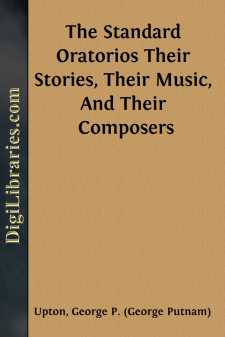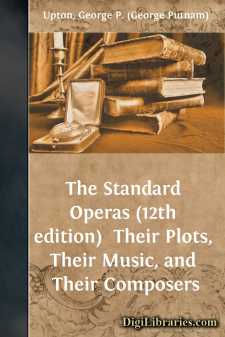Categories
- Antiques & Collectibles 13
- Architecture 36
- Art 48
- Bibles 22
- Biography & Autobiography 813
- Body, Mind & Spirit 142
- Business & Economics 28
- Children's Books 17
- Children's Fiction 14
- Computers 4
- Cooking 94
- Crafts & Hobbies 4
- Drama 346
- Education 46
- Family & Relationships 57
- Fiction 11829
- Games 19
- Gardening 17
- Health & Fitness 34
- History 1377
- House & Home 1
- Humor 147
- Juvenile Fiction 1873
- Juvenile Nonfiction 202
- Language Arts & Disciplines 88
- Law 16
- Literary Collections 686
- Literary Criticism 179
- Mathematics 13
- Medical 41
- Music 40
- Nature 179
- Non-Classifiable 1768
- Performing Arts 7
- Periodicals 1453
- Philosophy 64
- Photography 2
- Poetry 896
- Political Science 203
- Psychology 42
- Reference 154
- Religion 513
- Science 126
- Self-Help 84
- Social Science 81
- Sports & Recreation 34
- Study Aids 3
- Technology & Engineering 59
- Transportation 23
- Travel 463
- True Crime 29
The Standard Oratorios Their Stories, Their Music, And Their Composers
Categories:
Description:
Excerpt
THE ORATORIO.
The oratorio in its modern form is a musical setting of a sacred story or text in a style more or less dramatic. Its various parts are assigned to the four solo voices and to single or double chorus, with accompaniment of full orchestra, sometimes amplified by the organ. Like the opera, it has its recitative, linking together and leading up to the various numbers. The origin of the word is to be found in the "oratory," or place of prayer, where these compositions were first performed. Crescimbeni, one of the earliest musical writers, says: "The oratorio had its origin from San Filippo Neri, who, in his chapel, after sermons and other devotions, in order to allure young people to pious offices, and to detain [10] them from earthly pleasures, had hymns, psalms, and such like prayers sung by one or more voices." In tracing its evolutionary stages, its root will be found in the moralities, mysteries, and miracle-plays of the thirteenth and fourteenth centuries, which were instituted for the purpose of impressing Biblical events in symbolical form upon the early converts to the Christian Church. These representations were entirely dramatic in character, and their subjects, though always sacred, were often grotesquely treated, and sometimes verged on buffoonery. Among the actors, God, Christ, Satan, Mary, and the angels nearly always appeared; later, the various virtues and vices were personified. The representations were usually given in the streets or in fields, and sometimes on the water. The highest dignitaries of the Church did not disdain to act in these plays, nor did their promoters hesitate at times to reduce the exhibition to the level of a Punch-and-Judy show by the introduction of puppets cleverly manipulated. The earliest of these miracle-plays in England were performed by the various London Companies. The Tanners, for instance, produced the Fall of Lucifer. The Drapers played the Creation, in which Adam and Eve appeared in their original costume,--apparently without giving offence. The Water-Drawers naturally chose the Deluge. In the scene describing the embarkation of Noah's family, the patriarch has a great deal of trouble with his wife, who is determined not to go aboard. She declares that if her [11] worldly friends are left behind, she will stay and drown with them, and he can
"Rowe forth away when thou liste,
And get thee another wif."
Noah expostulates with her in vain, grows furiously indignant, and bids her
"Come in, wif, in twenty devill ways,
Or alles stand thee without."
Her friends the gossips entreat her to remain with them, and have a carousal over a "pottel full of malmsey;" but at last Shem makes a virtue of necessity and forces her into the ark, as the following scene shows:--
"In faith, moder, in ye shall,
Whither you will or noughte."
NOE.
"Well me wif into this boate."
[She gives him a box on the ear.]
"Haue you that for thee note."
NOE.
"A le Mary this whote,
A childre methinks my boate remeues,
Our tarrying here heughly me grieues."
[She is forced into the ark.]
The earliest of these representations, so far as has been discovered, dates back to the twelfth century, and is known as the Feast of Asses....



